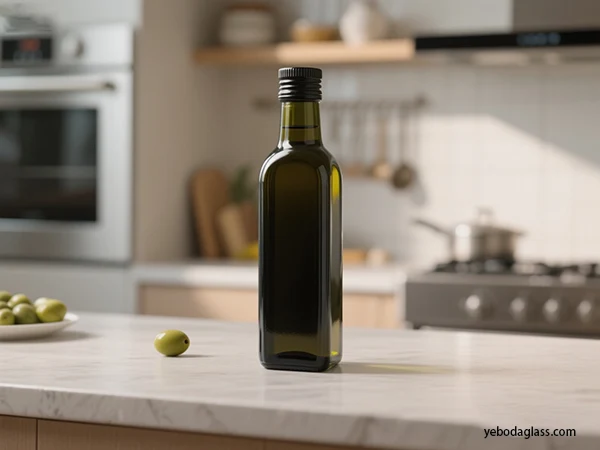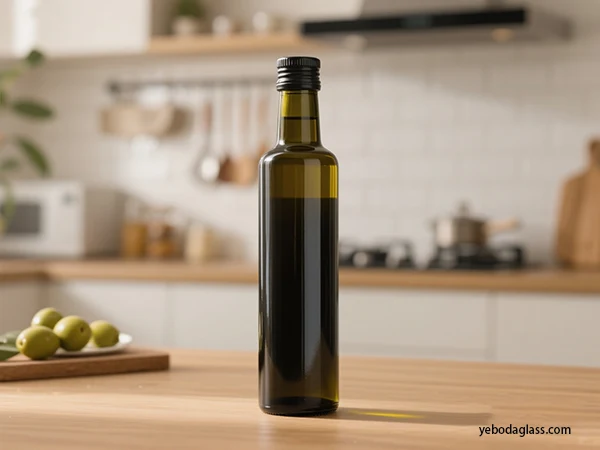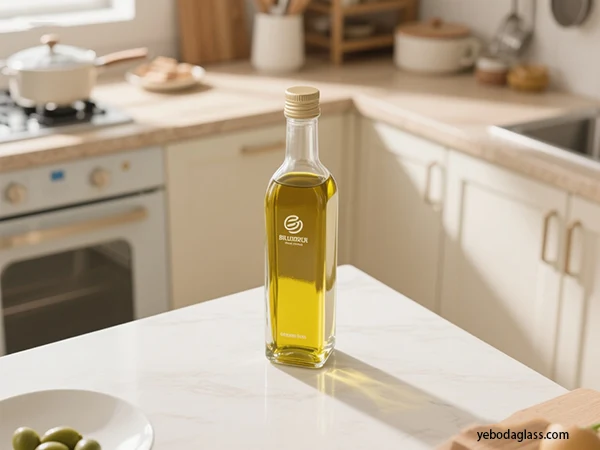Introduction
This report provides an overview of sourcing factory-direct olive oil containers for distributors. The report looks at product categories, sourcing strategies, materials, customization options, logistics, prices, and risk mitigation. The objective is to help distributors make better informed decisions when considering buying olive oil containers directly from the manufacturer to achieve cost savings, quality, and promote an efficient supply chain. The main takeaway was that distributors need to understand the interaction between their materials to best preserve oil, understand the advantages to taking a factory direct sourcing option, and take control of quality assurance and negotiate effectively.

Olive Oil Container Product Landscape
The olive oil container market is very diverse with many options available to distributors including choices based on products lines, branding strategies options, and consumer behaviours. The primary considerations related to olive oil containers are the materials, size, and closure types of containers which may all help or hinder preservation, appearance, and functionality.
Material Options for Olive Oil Container
- Verre: This is the most traditional, and most sustainable and acceptable material for storing high-quality olive oils, especially Extra Virgin Olive Oil (EVOO). Glass is non-reactive with olive oils, meaning there is no chemical leaching and the flavor and aroma qualities are preserved. Glass has excellent barrier properties, performs well against passive and reactive oxygen, does not impart odors or flavors of its own, and is likely to produce true quality cell culture. On the downside, glass is fragile and subject to breakage. It can also provide some degree of light penetration, so normally colored glass is used to help shield olive oils from unwanted exposure. Changes in tint or color of the glass do not usually matter, with dark bottles being reasonably important to cover UV light to help avoid photo-oxidation of the oil, which degrades oil quality and nutritional quality of the oil. Clear glass could provide more consumer acceptance, but care should be taken to offer added protection such as UV-blocking coatings or cardboard cases. Glass or plastic vessels (drums) are used to pack bulk oils. In general, oil packed within glass has a shorter shelf life than can-packed oil.
- Tinplate (Metal Cans): Metal cans are great for olive oil. They provide the best and unique protection against light, humidity, and oxygen, so they are a good choice for longer term storage. They can be pretty strong and can be lithographed. The user can even provide a custom design. Available sizes of metal cans vary between small food service and retail formats, or large bulk containers. While usually safe, ensure to check if the tinplate is food-grade metal and the potential of corrosion occurring in some harsh conditions or from aggressive food products or oils the tinplate could come in contact with. Most importantly, it is not suggested to reuse tinplate cans of any purpose, and in re-filling cases of tinplate with olive oils.
- This is the perfect option if you want to demonstrate your commitment to the environment and lure eco-friendly consumers. Plastic containers such as PET have advantages, including cheaper price and durability, when compared to glass. Without a doubt, there are limitations to PET as it doesn’t have great barrier properties; oxygen can permeate the PET plastic and drastically reduce the shelf life of the oil. Additives such as radical scavengers or oxygen barriers can be added to PET to better protect against oxygen, but often comes at an additional cost.
- Bag-in-Box (BIB): BIB is a growing trend for bulk olive oil distribution for very good reasons. BIB packaging consists of a flexible bag with a dispensing tap that is contained in a cardboard box. BIB packaging also provides an excellent barrier against air and light, preserving shelf life indefinitely or until the bag is opened. Because BIB packaging is flat on supply, storage and transport costs are greatly reduced. Catering Companies, Restaurants and the Foodservice industry are adopting this style of packing process for ease of use, and liquid dispensing without glugging or splashing. Typically BIB bags are made from BPA free PET plastic, making them 100% recyclable.
Common Sizes for Olive Oil Container
Olive oil containers come in numerous sizes to serve various market segments and distribution channels. Standard container sizes include:
- Détail: İhracat Ambalajında Neden Cam Bal Kavanozları Tercih Ediliyor?
- Bulk/Food Service: Cam bal kavanozları gıda güvenliğini sağlar, raf ömrünü uzatır ve markanızın küresel ihracat için birinci sınıf çekiciliğini ve sürdürülebilirliğini artırır.
Küresel çapta ticareti yapılan bir emtia olan bal, benzersiz özelliklerini koruyan ve uluslararası standartları karşılayan bir ambalaj gerektirir. Bu karmaşık ortamda, cam bal kavanozları sık ihracatlar için tercih edilen ambalaj çözümü olarak ortaya çıkmıştır.
Üstün dayanıklılık, estetik çekicilik ve uyarlanabilir tasarımlar sunarak marka değerini ve tüketici algısını artırır. Bu rapor, camın hakimiyetinin ardındaki çok yönlü nedenleri inceleyerek, onu diğer seçeneklere göre daha öncelikli kılan temel faktörleri analiz etmektedir. Karşılaştırmalı analiz, paydaş yaklaşımı, bölgesel etki çalışmaları ve ekonomik ve çevresel değerlendirmeler yoluyla cam bal kavanozlarının bal ihracat ambalajı için neden altın standart olmaya devam ettiğini kapsamlı bir şekilde açıklamaktadır. Rapor, uluslararası bal ambalajlama kararlarını şekillendiren fizik, pazar dinamikleri ve düzenleyici yapıların ayrıntılı ve uzman düzeyinde bir analizini sunmaktadır.
- Bal İhracatında Cam ve Alternatif Ambalaj Malzemelerinin Karşılaştırmalı Analizi Bal ihracatı için ambalaj malzemesi seçimi, ürünün bütünlüğünü, pazarlama kapasitesini ve mantıksal verimliliği ciddi ölçüde etkiler. Çeşitli malzemeler mevcut olsa da,
- Pour Spouts: Cam Ambalaj
- Atalet: Cam kimyasal olarak pasiftir, balla reaksiyona girmesini veya sızmasını önler, saflığı, tadı ve besin profilini korumak özellikle ham veya organik bal için çok önemlidir.
- Camlar gazlara, neme ve kokulara karşı tam bir bariyer sağlayarak oksidasyonu, nem değişimlerini ve kirlenmeyi önler, bu da raf ömrünü büyük ölçüde uzatır. Cam berraklığı tüketicilerin ürünü, doğal rengini, stabilitesini ve kristalleşmesini gözlemlemelerine olanak tanır ve bu da genellikle ham balın kalitesini gösterir.
Cam, kaliteyi, geleneği ve lüks duygusunu ifade ederek balın iddia edilen değerini artırır.
İşe alım:
Cam 0 geri dönüştürülebilir ve kalite kaybına uğramadan sonsuza kadar geri dönüştürülebilir, altyapının mevcut olduğu yerlerde oldukça dayanıklı bir seçenektir.
- Sertlik ve Güvenlik: fiziksel hasara ve tacize karşı mükemmel koruma sağlar.
- Cam, plastik veya esnek poşetlere göre çok daha ağır olduğundan nakliye masrafları yüksek oluyor ve taşıma sırasında karbon ayak izi artıyor. Masraflı:
- Cam kırılmaya karşı hassastır, bu da güçlü ikincil ambalajlama ve dikkatli kullanım gerektirir, bu da maliyet ve mantıksal karmaşıklık ekler. Enerji Tüketimi:
- Durabilité: Yeni cam üretimi enerji yoğun bir işlemdir, ancak geri dönüşüm oranlarının yüksek olması nedeniyle bu tüketim azaltılmaktadır.

Polietilen Terraphlelet (PET)
- Légerement : Lighter-weight materials or deep design innovation can lessen material used and emissions from transportation.
- Minimal Packaging: The main sustainability strategy is to reduce total packaging material use.
- Reusable packaging: In particular, the concept of the reusable glass container and all cleaning/refilling solutions (although less common for direct-from-factory wholesale) contributes to waste reduction.
Sızıntı endişeleri (spekülatif) prim bal algısını etkileyebilir.
- Alright, here’s the drill: ISO 9001: Basically, this means the company isn’t just flying by the seat of its pants when it comes to quality. If you don’t see this, start raising your eyebrow.
- BRC (British Retail Consortium): Just your standard “we actually make stuff safely” badge, global edition. Tells you—almost screaming at you—that they’ve got food safety and quality at least somewhat together.
- FDA: Selling or importing into the U.S.? Gotta play by FDA’s rules for food contact. No exceptions. Well, except for people who enjoy legal trouble.
- SGS, CE: You’ll spot these around—think of them as the generic “yeah, we followed the rules” stickers for safety and quality. Not flashy, just necessary.
- FSC & SFI: Now, if you’re rocking paperboard for Bag-in-Box (BIB) packaging, you’ll want to see these. Means your packaging wasn’t made at the expense of some poor rainforest. Responsible forestry and all that good stuff.
mutlak bariyer, dayanıklı, istiflenebilir.
opak, ağır, çentiklenme, plastikle karşılaştırıldığında korozyon riski daha azdır.
Esnek Keseler
Son derece hafif, düşük malzeme kullanımı, özellik, alan verimliliği.
Avantages:
- Lower cost: Standard containers mass produced will typically have lower unit costs based on economies of scale.
- Less lead-time: Generally higher availability translates to shorter lead-times.
- Less MOQ: Often associated with lower Minimum Order Quantities making them accessible to smaller distributors or as trial runs.
- Proven design: They have been tested for function and consumer acceptability.
Drawbacks:
- fewer branding options: There is a lower degree of unique brand differentiation.
- More available to competitors: Competitors can easily purchase the same packaging
Ham, organik ve özel balın saflığını korur.
Avantages :
- Distinctive Brand Identity: Custom design allows for unique bottle shapes, colors, and finishes to be created, differentiating your product into the desired positioning and premium image.
- Added Functionality: Bespoke designs can incorporate functionality for improved pouring, dispensing, or preservation.
- Protection de la propriété intellectuelle: Custom design can provide a level of exclusivity.
Inconvénients :
- Increased Cost: Custom run tooling, design, and lower production volumes will generally provide a higher unit price.
- Longer Lead Times: Cost, design, prototyping, tooling and production setup time frames can substantially delay delivery schedules.
- Increased MOQs: Custom designed tooling and production runs usually require a higher volume of orders.
- Cost in Design and Development: Cost associated with design expertise and possibly prototyping.
Berraklık, tüketicilerin balın rengini, viskozitesini ve kristalleşmesini anlamasını sağlar.
Kaliteyi, geleneği ve lüksü ifade eder.
- Bottle Design and Shape: Standard bottles can be round, square, or custom proprietary shapes.
- Couleur de la bouteille : Most cans/containers are made from clear, green, or amber glass. Colors can be specified during the manufacturing process such as matte black or custom colors.
- Bottle Surface Decoration: Surface decoration such as: silkscreen printing, labelling, hot stamping, frosting, spray painting, etching, engraving, and many more options are available for branding and aesthetics.
- Lids and Closures: Any type of lid can be applied to bottle. There are endless options for colors and type of closure. Lids can also be designed for tamper evidence.

Etiketleme şeffaflığı kolaylaştırır.
Ham, organik, manuka ve özel bal sertifikalarının bütünlüğünü korur.
İhracat İçin Cam Ambalajlara İlişkin Paydaş Perspektifi
Son Tüketici: İddia Edilen Fiyat, Revelable ve İnanç
Tüketiciler pazarın merkezinde yer alıyor ve onların tercihleri ambalaj kararlarında önemli bir rol oynuyor.
Tanınan fiyat ve kalite:
Cam, içsel olarak kalite, saflık ve üstün kaliteyle ilişkilendirilir. Zengin ihracat pazarlarındaki tüketiciler genellikle cam bal kavanozlarına daha fazla ödeme yapar. Yeboda'nın cam bal kavanozu, birinci sınıf bir dokunuş ve görsel çekicilik sağlayarak marka güvenini güçlendirir.
Gıda güvenliği ve sağlık endişeleri:
- Shelf-Life Indicators: Imagine the bottle telling you, “Hey, I’m about to turn rancid, bud”—like, actual color changes, not just those sketchy expiration dates you ignore. There’s this new thing with cellulose nanofibers, methylene blue, and vitamin C—sounds like something from a lab, but it’s in your kitchen.
- Traceability Tech: QR codes, NFC chips, RFID tags, and that whole blockchain jazz. Swipe your phone and boom—proof your olive oil is legit and didn’t get swapped by some shady dealer. Italians, apparently, will fork over extra cash for these receipts. Honestly, can you blame them?
- TTIs (Time-Temperature Indicators): Fancy little gadgets log how hot (or not) the bottle’s gotten during shipping. Olive oil’s finicky—if it gets too toasty, it’s toast. These things help keep the good stuff good.
Duyusal deneyim:
Cam kavanozun ağırlığı ve deneyimi kutudan çıkarma ve tüketim deneyimini artırır.

İthalatçılar/Dağıtıcılar: Taşıma, Depolama ve Pazarlanabilirlik
Pazarlama ve satış:
Cam ambalajlı bal premium segmentte daha çok satılıyor; Beauty ise cazibesini koruyor.
Taşıma sırasında ürünün bütünlüğü:
Cam kavanozların tıkanma önleyici özelliği balın ilk günkü haliyle gelmesini sağlar.
Recyclable, reusable, maybe even refilling stations one day? Brands are shooting for packaging that doesn’t just end up in the bin. Closed-loop systems are all the rage, so your empties might get more lives than your iPhone gets updates. Bottom line? Distributors gotta catch these waves, or get stuck watching from the beach. The olive oil packaging world’s not just keeping up—it’s sprinting, and you wanna be out front, not eating its dust.




